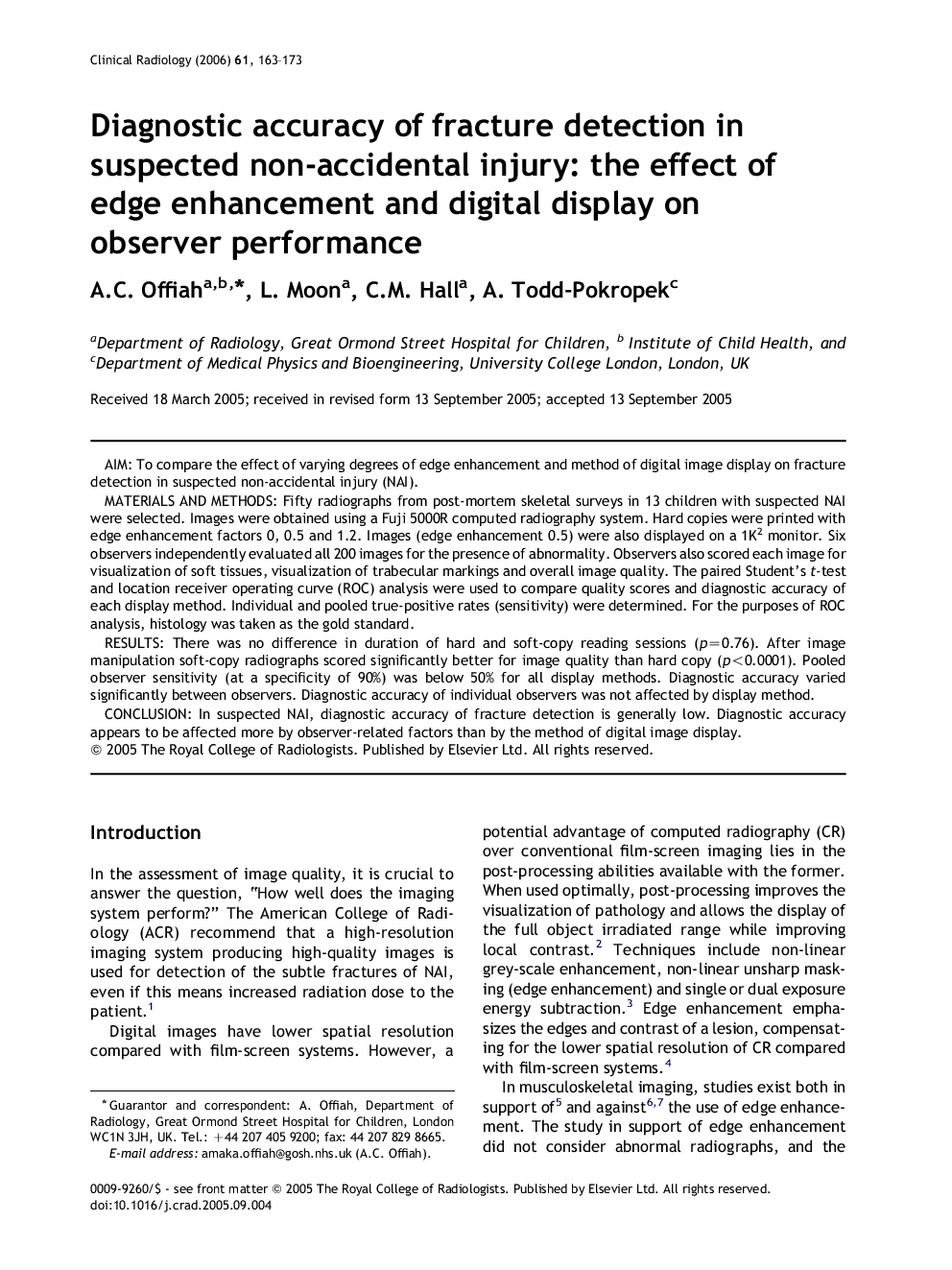| Article ID | Journal | Published Year | Pages | File Type |
|---|---|---|---|---|
| 3983962 | Clinical Radiology | 2006 | 11 Pages |
AIMTo compare the effect of varying degrees of edge enhancement and method of digital image display on fracture detection in suspected non-accidental injury (NAI).MATERIALS AND METHODSFifty radiographs from post-mortem skeletal surveys in 13 children with suspected NAI were selected. Images were obtained using a Fuji 5000R computed radiography system. Hard copies were printed with edge enhancement factors 0, 0.5 and 1.2. Images (edge enhancement 0.5) were also displayed on a 1K2 monitor. Six observers independently evaluated all 200 images for the presence of abnormality. Observers also scored each image for visualization of soft tissues, visualization of trabecular markings and overall image quality. The paired Student's t-test and location receiver operating curve (ROC) analysis were used to compare quality scores and diagnostic accuracy of each display method. Individual and pooled true-positive rates (sensitivity) were determined. For the purposes of ROC analysis, histology was taken as the gold standard.RESULTSThere was no difference in duration of hard and soft-copy reading sessions (p=0.76). After image manipulation soft-copy radiographs scored significantly better for image quality than hard copy (p<0.0001). Pooled observer sensitivity (at a specificity of 90%) was below 50% for all display methods. Diagnostic accuracy varied significantly between observers. Diagnostic accuracy of individual observers was not affected by display method.CONCLUSIONIn suspected NAI, diagnostic accuracy of fracture detection is generally low. Diagnostic accuracy appears to be affected more by observer-related factors than by the method of digital image display.
